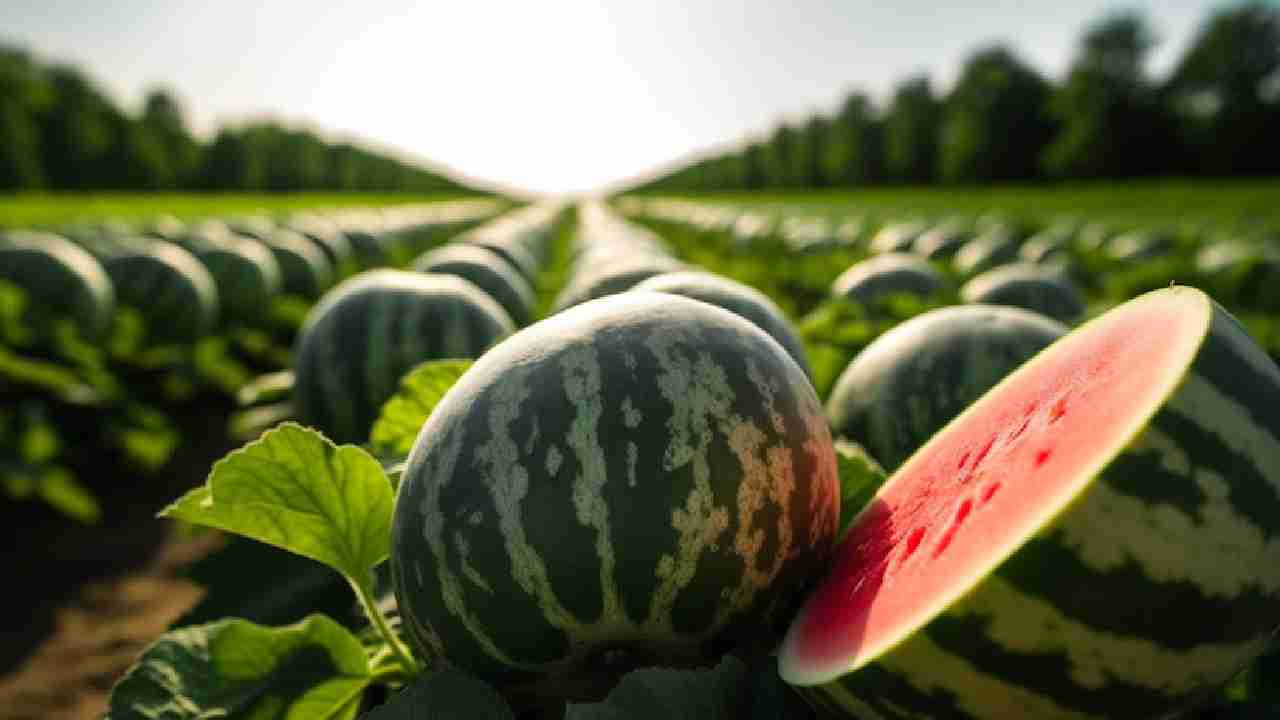Watermelon cultivation is becoming increasingly popular among farmers due to its high profitability. The demand for watermelons rises during the hot summer days when people crave refreshing fruits. Traditionally, farmers focus on staple crops, but shifting attention to watermelon cultivation can lead to substantial profits. In this guide, we’ll take you through the entire process, from planting to harvesting.
Watermelon cultivation: Ideal Soil and Climate Conditions

Soil
- Choose medium loamy or sandy loam soil with adequate organic matter.
- The soil should have a pH between 5.5 and 7.0 for optimal growth.
- Well-drained soil is crucial to prevent waterlogging.
Climate
- Watermelons thrive in warm climates with temperatures between 22-25 degrees Celsius for seed germination.
- High temperatures during the day and slightly cooler nights are ideal for fruit development.
- Adequate sunlight is essential for the growth of watermelon plants.
Field Preparation
- Plowing: Use a plow to turn the soil, ensuring it is loose and well-aerated.
- Pit Formation: Create pits for planting seeds. In flat areas, pits work well, while in hilly regions, use raised beds.
- Manure Application: Mix well-rotted organic manure, preferably cow dung, into the soil. Approximately 20-25 trolleys per hectare are recommended.
Planting Watermelon Seeds

- Seed Sowing: Sow 3-4 seeds per pit or hole at a depth of 1.5 cm.
- Seed Spacing: Maintain a spacing of 2.5 meters between rows and 1.5 meters between plants.
- Germination: Seeds typically germinate in 3-4 days.
Irrigation
- In the initial 10-15 days after sowing, regular irrigation is crucial.
- Watermelon plants have deep roots that can access groundwater. If cultivating near riverbanks, natural watering may suffice.
Fertilization
- Apply 80 kg/ha of nitrogen, 60 kg/ha of phosphorus, and 60 kg/ha of potassium.
- Fertilize the soil during preparation, ensuring uniform mixing.
Pest and Disease Management
- Regularly monitor for pests like aphids and apply appropriate pesticides.
- Common diseases include powdery mildew; use fungicides preventively.
Harvesting
- Harvesting typically begins approximately three months after planting.
- Watermelons should sound hollow when tapped and have vibrant colors.
- Use a sharp knife to cut the stem, keeping a small portion attached to the fruit.
Conclusion
Watermelon cultivation, if done with care and attention to detail, can yield significant profits for farmers. By understanding the soil requirements, climate conditions, and following proper cultivation practices, farmers can ensure a successful watermelon harvest. Whether you’re a traditional farmer or looking for a lucrative alternative, watermelon cultivation is a viable and rewarding option.
Also Read – Boosting Soybean Production: High-Yielding Varieties for Farmers



